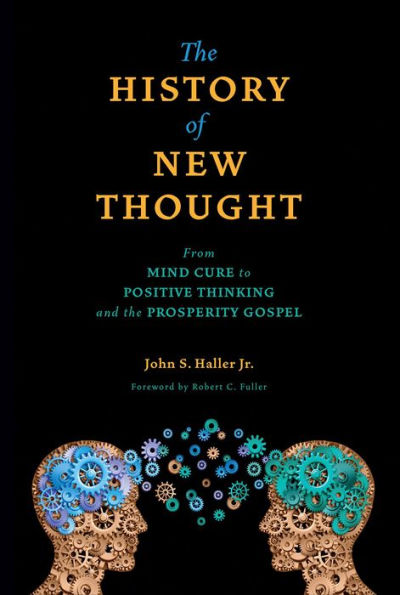The History of New Thought: From Mind Cure to Positive Thinking and the Prosperity Gospel
Long before The Secret, writers and healers in the New Thought movement argued that the mind shapes reality. In this clear, wide‑ranging history, John S. Haller Jr. traces New Thought from its nineteenth‑century roots—Phineas P. Quimby, Emma Curtis Hopkins, and others—through William Walker Atkinson, an early popularizer of the “law of attraction,” to its imprint on modern self‑help and popular psychology. Rather than centering on denominations, Haller follows people, practices, and ideas: mental healing, affirmations, prosperity teachings, and the movement’s dialogue with science and religion (including the influence of the Swedish scientist, mystic and theologian Emanuel Swedenborg). He shows how New Thought migrated from lectures and magazines into boardrooms, pulpits, and bestsellers, shaping a durable American optimism: the conviction that thought can transform life.
The History of New Thought is essential reading for anyone interested in American religious history, psychology, or the roots of contemporary self‑help.
1111857912
The History of New Thought is essential reading for anyone interested in American religious history, psychology, or the roots of contemporary self‑help.
The History of New Thought: From Mind Cure to Positive Thinking and the Prosperity Gospel
Long before The Secret, writers and healers in the New Thought movement argued that the mind shapes reality. In this clear, wide‑ranging history, John S. Haller Jr. traces New Thought from its nineteenth‑century roots—Phineas P. Quimby, Emma Curtis Hopkins, and others—through William Walker Atkinson, an early popularizer of the “law of attraction,” to its imprint on modern self‑help and popular psychology. Rather than centering on denominations, Haller follows people, practices, and ideas: mental healing, affirmations, prosperity teachings, and the movement’s dialogue with science and religion (including the influence of the Swedish scientist, mystic and theologian Emanuel Swedenborg). He shows how New Thought migrated from lectures and magazines into boardrooms, pulpits, and bestsellers, shaping a durable American optimism: the conviction that thought can transform life.
The History of New Thought is essential reading for anyone interested in American religious history, psychology, or the roots of contemporary self‑help.
The History of New Thought is essential reading for anyone interested in American religious history, psychology, or the roots of contemporary self‑help.
29.95
In Stock
5
1

The History of New Thought: From Mind Cure to Positive Thinking and the Prosperity Gospel
320
The History of New Thought: From Mind Cure to Positive Thinking and the Prosperity Gospel
320
29.95
In Stock

Product Details
| ISBN-13: | 9780877853480 |
|---|---|
| Publisher: | Swedenborg Foundation Publishers |
| Publication date: | 12/01/2012 |
| Series: | SWEDENBORG STUDIES |
| Edition description: | 1 |
| Pages: | 320 |
| Product dimensions: | 6.40(w) x 9.30(h) x 1.20(d) |
| Age Range: | 3 Months to 18 Years |
About the Author
From the B&N Reads Blog
